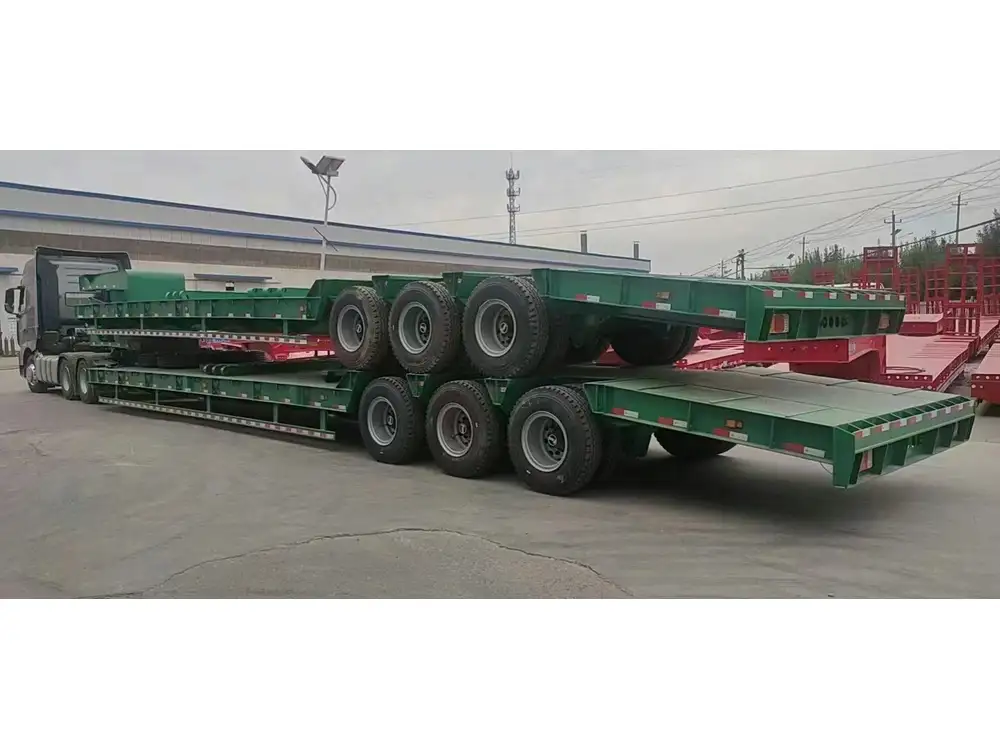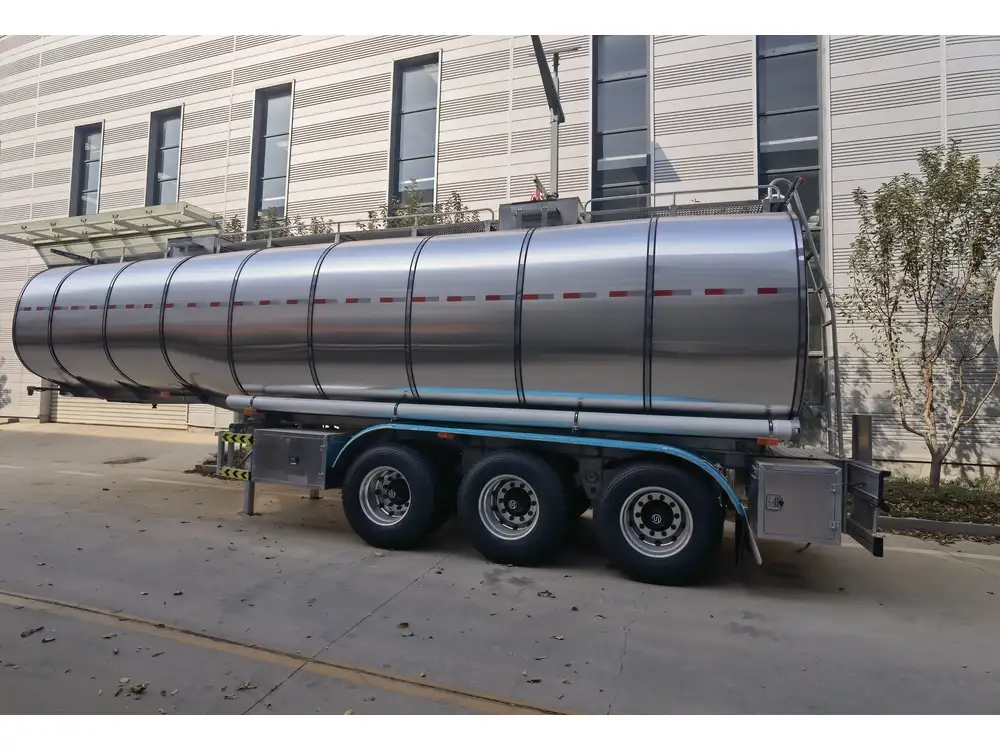When it comes to the transportation industry, knowing the dimensions of semi truck trailers is crucial for numerous reasons, including compliance with regulations, bridge clearances, and efficient loading. This article explores the height of semi truck trailers in detail and provides essential knowledge for manufacturers, logistics experts, and truck operators seeking to optimize their operations.
The Standard Height of Semi Truck Trailers
The standard height for a semi truck trailer is fundamentally determined by federal guidelines and state regulations that vary across the United States. Most commonly, the legal height limit for semi truck trailers is 13 feet 6 inches (or 4.1 meters). This specification is important as it directly correlates with safety, load capacity, and the ability to navigate under bridges and overpasses.
| Trailer Type | Typical Height | Maximum Height |
|---|---|---|
| Flatbed Trailers | 13 to 13.5 ft | 14 ft (if licensed) |
| Dry Van Trailers | 13 to 13.5 ft | 14 ft (if licensed) |
| Refrigerated Trailers | 13 to 13.6 ft | 14 ft (if licensed) |
| Tanker Trailers | 12 to 13.5 ft | 14 ft (if licensed) |
Why Height Matters in the Trucking Industry

1. Regulatory Compliance
Understanding the maximum height is not just about meeting the law; it’s also about ensuring safety on the roads. Over-height loads can lead to accidents, damage to infrastructure, and significant fines. Adhering to the height limits helps prevent violations.
2. Vehicle Dynamics and Fuel Efficiency
The height of a trailer can impact several areas, including aerodynamics, stability, and even fuel consumption. A trailer that’s too tall can experience increased drag, which leads to reduced fuel efficiency. Conversely, a properly-heighted trailer can enhance vehicle dynamics, thus optimizing fuel usage.
3. Loading Considerations
The internal height of the trailer is just as important as its external dimensions. Cargo height must not exceed the limit, or else it poses risks of shifting or falling during transit. Adequate height is essential not only for cargo fit but also for securing and protecting goods.

Factors Influencing the Height of Semi Truck Trailers
Several key factors influence the height of semi truck trailers, including:
A. Type of Trailer
The classification of trailers varies greatly by design and application. Different types of trailers serve unique purposes, leading to variations in height:
Flatbed Trailers: Generally offer a lower height for easy loading and unloading, typically around 13 to 13.5 feet.
Enclosed Trailers: Commonly used for transporting sensitive cargo, heights may range up to 13.6 feet.
Refrigerated Trailers: Often designed to accommodate equipment and temperature control systems, hence their heights align with standard limits.
B. Cargo Type
Certain cargo types may dictate specific height requirements. For instance, if transporting tall machinery or bulk materials, configurations might demand a different height to ensure safety during transit.

C. State Regulations
Height limits can vary significantly from state to state. While 13 feet 6 inches is accepted nationwide, some states might allow for taller configurations based on specific local regulations.
Common Questions Related to Trailer Height
How Do You Measure the Height of a Semi Truck Trailer?
To accurately gauge a semi truck trailer’s height, one should measure from the ground level to the top of the trailer when it is unladen. Using a tape measure, observe the following steps:
- Ensure the trailer is parked on a flat surface.
- Measure from the ground directly up to the highest point of the roof.
- Note the measurement for reference, particularly if the cargo height is a concern.

What Are the Risks of Exceeding Trailer Height Limits?
Exceeding height limits can have several dire consequences, such as:
Increased Risk of Accidents: Taller trailers can collide with overpasses, resulting in accidents that endanger both the truck driver and other road users.
Legal Penalties: Truck drivers may face fines and penalties if they fail to comply with established height regulations, leading to costly setbacks for businesses.
Inventory Damage: Loads that exceed height limits risk damage, especially in the case of fragile items.
What Should Truckers Know About Overheight Permits?
For loads exceeding the standard height, operators should investigate the possibility of obtaining overheight permits. These permits enable transport of taller loads legally, albeit with restrictions regarding routes, timing, and conditions.
| Permit Type | Description |
|---|---|
| Overweight Permit | Grants allowance for heavier loads |
| Overheight Permit | Specific for loads exceeding height limits |
| Seasonal Permits | Temporary allowances for certain times |
The Role of Technology in Height Measurement

Height Detection Systems
High-end semi-trucks increasingly integrate advanced height detection systems. These tools utilize GPS technology and sensors to automatically measure and relay critical dimensions, ensuring compliance with road regulations. Such systems minimize the potential for human error.
Digital Load Planning Tools
Logistics planning software can assist in calculating the required trailer height based on cargo specifications. This technology enables truck operators to ascertain the optimum trailer type and height thus optimizing loading strategies and route planning.
The Impact of Height on Load Capacities
The height of a trailer plays a key role in its load capacities. It is critical to recognize how this impacts not only cargo but also logistical strategies:

1. Maximizing Volume
A taller trailer allows for more vertical space, which can be beneficial for transporting bulk items that do not exceed height limitations. Companies looking to maximize load volume might consider implementing specialized designs adhering to permissible height protocols.
2. Stability Concerns
Height can influence the center of gravity in a loaded trailer. An increase in height may affect the stability and handling of the rig, especially during turns or adverse weather conditions. Proper weight distribution across various cargo heights is imperative to maintaining vehicle balance.
Conclusion
The knowledge of a semi truck trailer’s height is essential for manufacturers, operators, and logistics professionals alike. Compliance with federal regulations, safe transportation practices, and efficient loading all hinge on understanding these crucial measurements. By considering the various factors influencing trailer height and staying informed about the related technologies, stakeholders can achieve seamless operations and ensure safer roadways for all.
As the semi-trailer manufacturing industry continues to evolve, maintaining an awareness of height standards and advancements in measurement technology will be vital for success. With a keen focus on these parameters, businesses can enhance their operational efficiency, optimize cargo transport solutions, and navigate the complexities of the logistics sector effectively.



